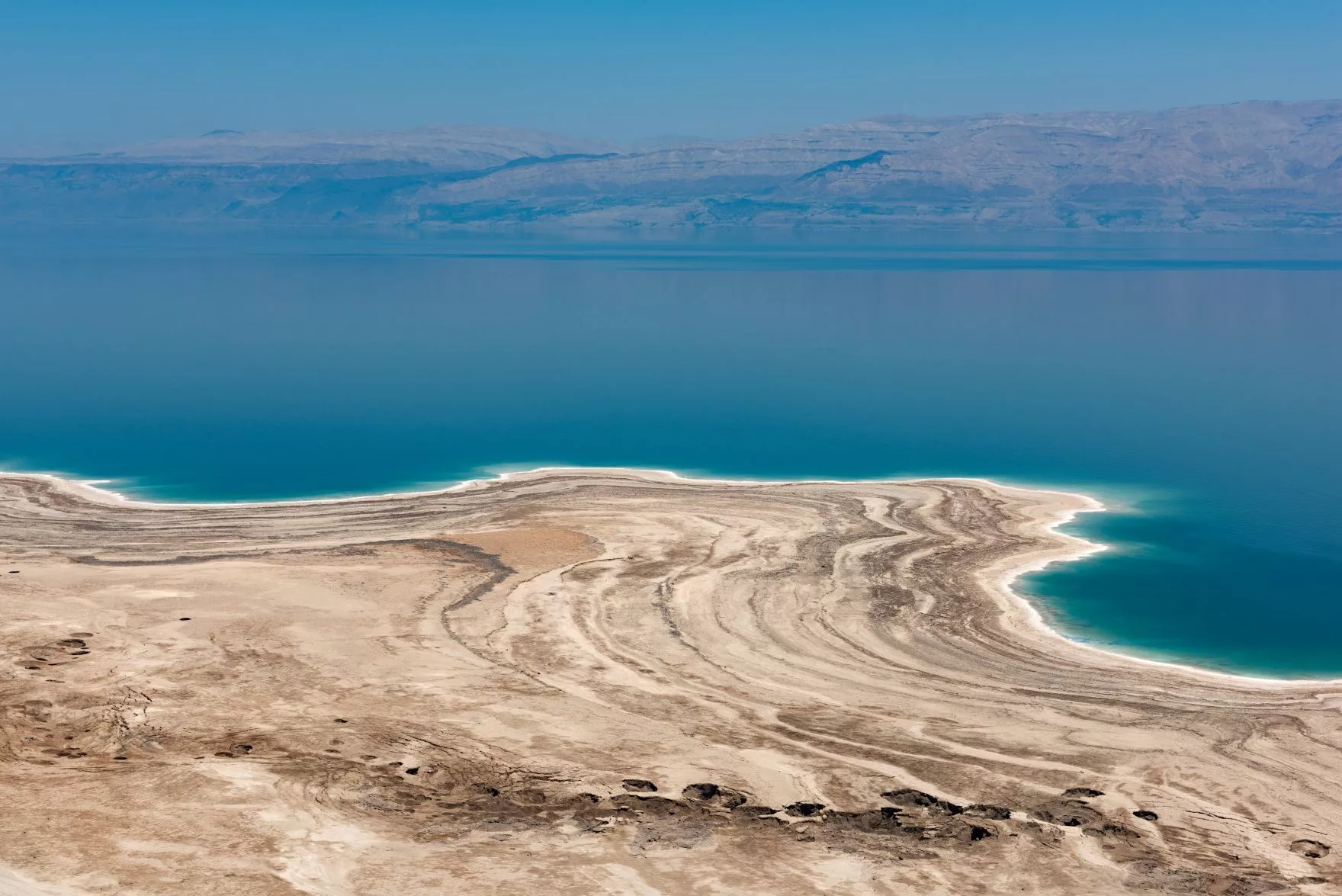Dead Sea, where physics throws a pool party and salt is the guest of honor. It’s the lowest point on Earth’s surface, the deepest hypersaline lake on the planet, and the only place where salt giants are born in real time.
Yes, salt giants. Not the kind that stomp around in fantasy novels, but colossal underground formations that stretch for kilometers and stack up thicker.
Other seas like the Mediterranean and Red Sea have salt deposits too, but they’re ancient fossils compared to the Dead Sea’s live-action drama. Only in the Dead Sea, researchers can tackle the physical processes behind massive salt formations and, in particular, the spatial and temporal variations in their thickness.
UC Santa Barbara researchers dove deep into the physics of the Dead Sea and uncovered how the fluid dynamical and associated sediment transport processes currently governing the Dead Sea. These processes are influenced by factors such as the fact that the Dead Sea is a saltwater lake with no outlet, meaning water can only leave through evaporation.
Study on the climate history of Dead sea
Over thousands of years, this has caused the lake to shrink and leave behind salt deposits. In recent times, the damming of the Jordan River, which supplies water to the lake, has made the situation worse, causing the water level to drop by about 1 meter (3 feet) each year.
Temperature differences in the Dead Sea’s water layers also affect how salt structures like salt giants, domes, and chimneys form. The lake used to be “meromictic,” meaning it stayed layered all year round, with lighter, warmer water on top and heavier, saltier, cooler water below.
Temperature differences in the Dead Sea’s water layers help shape salt formations like salt giants, domes, and chimneys. In the past, the lake was meromictic, meaning it stayed layered all year. Warm, less salty water sat on top, while cooler, saltier water stayed below, even in winter. This stable layering kept the salt separated.
But in the early 1980s, things changed. The Jordan River’s flow was partially diverted, and evaporation began to outpace the amount of freshwater coming in. As a result, the surface water became just as salty as the deeper water, allowing the layers to mix. The lake shifted from meromictic to holomictic, a state where the water layers overturn once a year.
The struggle for life in the Dead Sea sediments
Today, the Dead Sea still forms layers, but only during the warmer eight months of the year.
In 2019, researchers discovered something unusual happening in the Dead Sea during summer: halite crystals, basically rock salt, were forming, a process usually seen in cooler months. Typically, halite “snow” appears when the water becomes so salty that it can’t dissolve any more salt, especially in the deeper, colder parts of the lake.
But in summer, even though evaporation was making the surface water saltier, the warmer temperatures kept the salt dissolved in the upper layer. So despite high salinity, crystal formation was delayed because heat helped the water hold more salt.
This creates a process called double diffusion, where the warmer, saltier water at the top cools and sinks, while the cooler, less dense water at the bottom warms up and rises. As the top layer cools, salt starts to form and fall like “salt snow.”
Earliest Evidence of Human Impact on Earth’s Geology Has Been Found in The Dead Sea
According to the researchers, a mix of evaporation, temperature changes, and shifting water densities, along with currents and waves, work together to build salt deposits in different shapes and sizes. Unlike other salty lakes, where this happens mainly in the dry season, the Dead Sea sees the strongest salt formation in winter. This ongoing “salt snow” helps explain how massive salt structures, like the salt giants, form, similar to those found deep beneath the Mediterranean Sea, which dried up millions of years ago during the Messinian Salinity Crisis.
UC Santa Barbara mechanical engineering professor Eckart Meiburg said, “There was always some inflow from the North Atlantic into the Mediterranean through the Strait of Gibraltar. But when tectonic motion closed off the Strait of Gibraltar, there couldn’t be any water inflow from the North Atlantic.”
“The sea level dropped 3-5 km (2-3 miles) due to evaporation, creating the same conditions currently found in the Dead Sea and leaving behind the thickest of this salt crust that can still be found buried below the deep sections of the Mediterranean. But then a few million years later, the Strait of Gibraltar opened up again, and so you had inflow coming in from the North Atlantic and the Mediterranean filled up again.”
Researchers say that underwater springs and shifting salinity help form unique salt structures like domes and chimneys. Studying these processes not only reveals how salty lakes behave but also offers clues about coastal erosion, sea level changes, and possible resource extraction.
Journal Reference:
- Eckart Meiburg and Nadav Lensky. Fluid Mechanics of the Dead Sea. Annual Review of Fluid Mechanics. DOI: 10.1146/annurev-fluid-031424-101119
